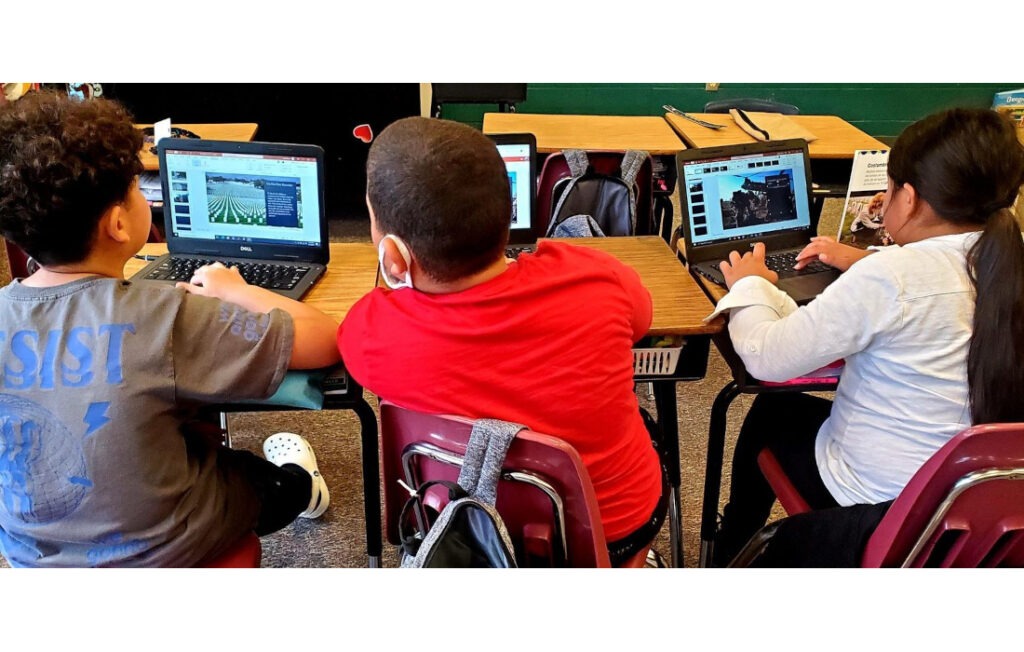Sometimes schools can fall into routines that, though working, need updating to find even better, more engaging ways of teaching and learning. Having educational technology provides an efficient, agile platform that gives educators more ways to interact with each other and students—not only to promote students’ academic growth but also their social emotional learning and well-being.
Onslow County Schools in North Carolina have experienced this using Microsoft education technologies. The district adopted new tools before the pandemic, has relied on them throughout, and uses them now in continually evolving ways for remote, hybrid, and in-person learning. And Onslow has learned that it is vital for a school’s instructional technology team to help drive this kind of technological innovation.
At Onslow, it was Stephen Taylor, Director of Digital Learning and Teaching Services, and Jeff Pitman, the Chief Technology Officer, who chose Microsoft education technologies. They were drawn to specific learning tools such as Microsoft Teams, the agile platform that has since made collaborating seamless at Onslow; Immersive Reader, which has helped students with reading difficulties catch up to peers; and Reading Progress, which has helped engage and teach English language learners, among others. These and other Microsoft tools that support personalized instruction are helping Onslow teachers provide an equitable and inclusive education and have enabled them to increase the focus on students‘ social emotional learning and well-being over the past two challenging years.
Choosing Microsoft for systems and one-to-one device access
In 2014, Onslow County Schools leaders determined they needed to choose one operating system to help everyone in the district succeed. They wanted a modern classroom alternative to other tools they had tried. Microsoft 365 fit the bill by allowing Onslow to use one comprehensive platform instead of different products for different things. Currently, about 30,000 Dell Latitude laptops are distributed to students and educators, providing one-to-one device access across the district.
“What we loved about Microsoft was the fact that a teacher can go from collaborating with peers, to admin, to people at the county office, to students—and always be in the same pane of glass, in the same environment,” Stephen said.
This gave teachers the power to use technology without costing them valuable time. And when COVID-19 forced students to learn from home, the technology eased the transition, and required just one day of training to connect teachers and students from a distance.
Fostering ongoing social emotional growth and connectivity
Over the last two years, Teams helped students stay connected and engaged. Longtime Onslow middle school teacher Cathy Darden called it a game-changer that allowed her to regularly connect with students face to face even when they were remote—not just about assignments but their overall well-being.
“With Teams, I was able to have the kids post or check in with me with how they’re feeling. Sometimes I would have them do a poll, something silly, like ‘Which tastes better: Burger King or Hardee’s, Cheetos or Takis?’ and they would all reply in Teams. That would be their way of checking in with me,” Cathy said.
Even now when students and educators need to work remotely for any reason, they can still have a positive, integrated experience with Teams as a connective tissue that supports continuity of education.
Parents benefit too because they’re now more able to participate in their children’s lives through virtual open houses, virtual parent-teacher conferences, and more.
Adding permanent virtual learning options
The breadth and agility of Microsoft technologies have helped Onslow tap into its own innovation, too. Mid-pandemic, the district confidently started a virtual school that’s solely reliant on Teams to function. There are a total of about 900 kids enrolled in K-12.
Onslow leaders saw a need for this virtual option as fully remote learning subsided and many students, parents and teachers wanted to continue remote education long-term. Steve Clarke, the Principal of Onslow Virtual Secondary School (OVSS), said this virtual option has worked particularly well for students who have struggled in traditional learning settings. They are now “on an even playing field with our other kids, working in our curriculum, working in our ecosystem,” he said. “That wasn’t even possible or dreamed of before a year and a half ago.”
Kiki, a 7th grader with cancer who was using Microsoft tools to learn remotely before the pandemic because of her illness, now attends OVSS, which helps her feel included and supported. Before the school existed, she doubted she could overcome education barriers because of being out so often for treatment. “But I think I can now,” said Kiki, who added that virtual learning has helped her be the best student she can and “achieve the high goals” she sets for herself.
Moving forward
Onslow educators expect Teams will continue to serve as a community glue between teachers and students, school and parents, curriculum, and coursework. “Teams takes down the walls. It makes us closer in a way that you just don’t get with email,” said Cathy, who likes how it eases multitasking. She can connect with colleagues through Teams anytime, anywhere, instead of chasing them down the hallway to talk before a class, she said. “I can’t imagine not having Teams. It just offers too much flexibility.”
Read more about Onslow’s success story and find out how Microsoft tools and devices can support collaborative student learning, anytime and anywhere.





